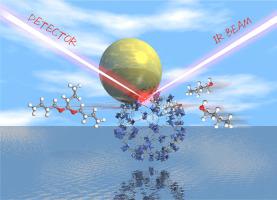Journal of Catalysis ( IF 6.5 ) Pub Date : 2022-11-13 , DOI: 10.1016/j.jcat.2022.11.014 Liang Zhu , Jerry Pui Ho Li , Yang Liu , Junyu Lang , Songwei Zhang , Willinton Yesid Hernández , Wen-Juan Zhou , Vitaly Ordomsky , Tao Li , Yong Yang

|
Comparing to homogeneous systems, direct alcohol to acetals conversion (DAAC) reaction through heterogeneous catalysts has obvious advantages of simple separation, less corrosion and waste. However, progress on this research is quite limited. Recently a breakthrough of Ru@MIL-101(Cr) catalyst was found with high selectivity and conversion for DAAC of aliphatic alcohol and diols towards desired products. In this study, time resolved in situ FT-IR was performed for capturing molecular-level information on the active sites of the catalysis system. Transients analysis of interaction between n-butanol/butanal and two active surface sites induced by Ru loading on MIL-101(Cr) provides key insight into the reaction, revealing that Ru@ MIL-101(Cr) confines the reaction to the ideal acidic sites between Ru nanoparticles and MIL-101(Cr) support for efficient process.
中文翻译:

Ru@MIL-101(Cr) 催化剂上的活性位点行为将醇转化为缩醛,正丁醇和丁醛的原位 FT-IR 研究
与均相体系相比,通过多相催化剂进行的直接醇缩醛转化(DAAC)反应具有分离简单、腐蚀少、浪费少等明显优势。然而,这项研究的进展非常有限。最近发现 Ru@MIL-101(Cr) 催化剂取得了突破,它对脂肪醇和二醇的 DAAC 具有高选择性和转化率,可转化为所需产物。在这项研究中,时间原位解决进行 FT-IR 以捕获催化系统活性位点的分子水平信息。对 MIL-101(Cr) 负载 Ru 诱导的正丁醇/丁醛与两个活性表面位点之间相互作用的瞬态分析提供了对该反应的关键洞察,表明 Ru@ MIL-101(Cr) 将反应限制在理想的酸性条件下Ru 纳米粒子和 MIL-101(Cr) 之间的位点支持高效工艺。











































 京公网安备 11010802027423号
京公网安备 11010802027423号